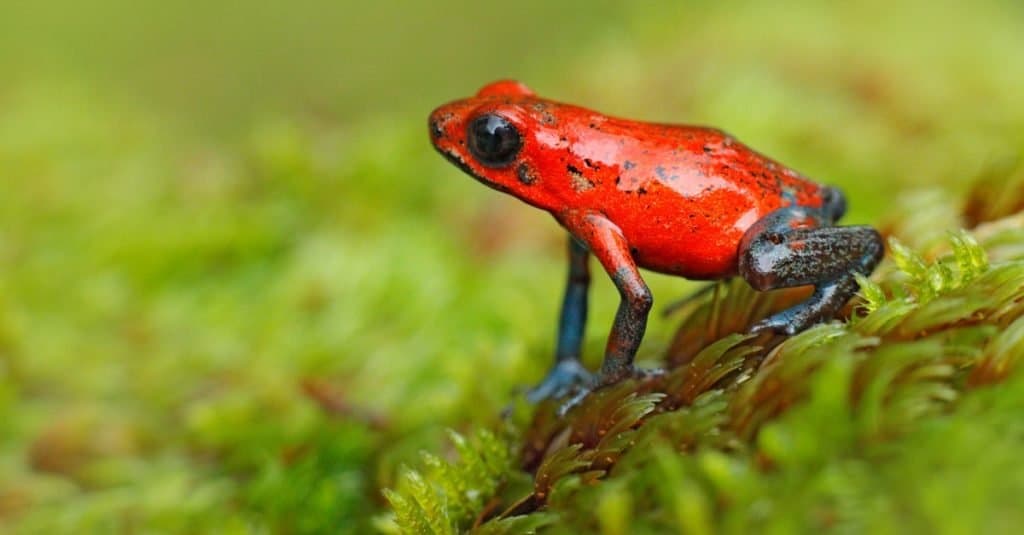One of their main adaptations to keep them safe from predators is their brightly colored skin, which ranges from yellow to bright blue or red. This skin warns predators looking to add them to their diet that these tiny frogs are extremely toxic if ingested.

A group of poison dart frogs is known as an “army.”
One of this frog’s adaptations is its brightly colored body, from blue to red and black to golden yellow.
Poison dart frogs are sometimes known as “poison arrow frogs.”
The golden poison dart frog, the most toxic of all of the frog species, has enough toxin in its body to kill over 20,000 mice.
Some varieties of these frog’s poison show promise in the medical field, including one being synthetically adapted to be a painkiller for humans.
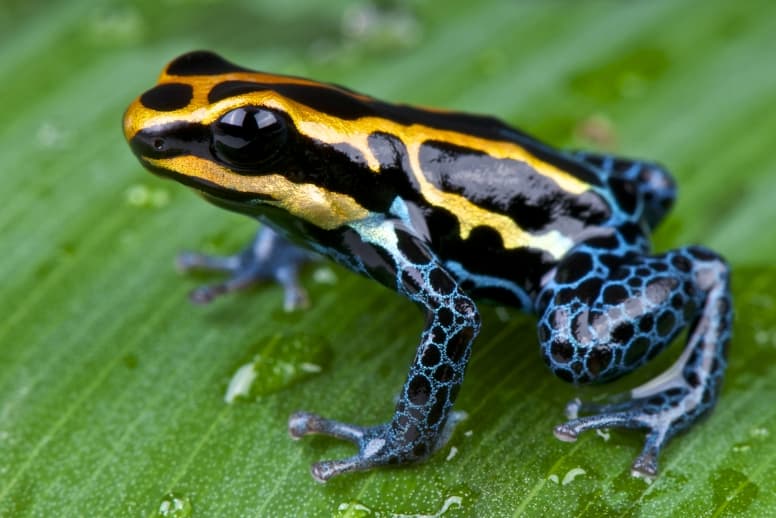
One of the adaptations these frogs are famous for is their brightly colored skin. This skin serves as a warning to predators about their extremely toxic secretions. The term for creatures that have bright coloration to warn predators that they are toxic is called “aposematic coloration.”
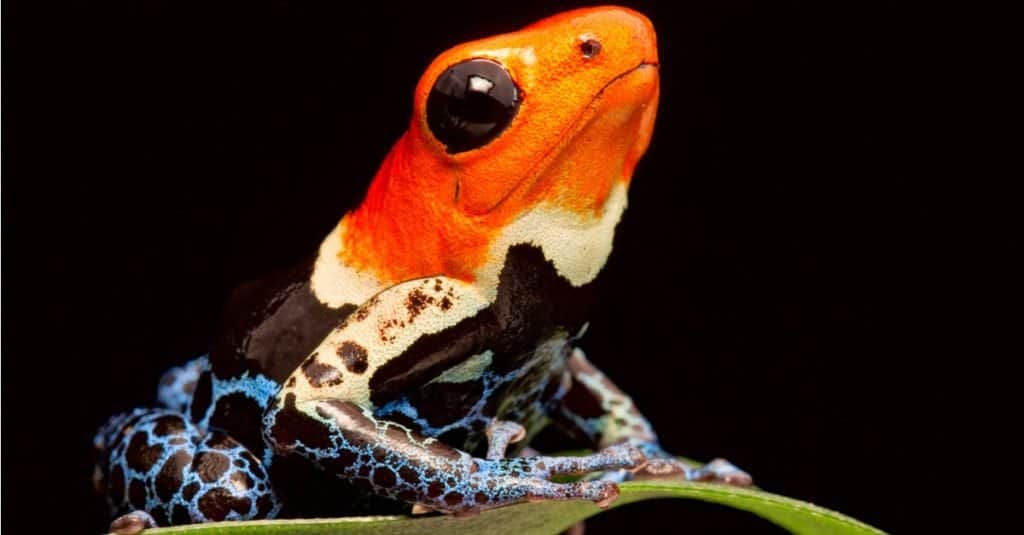
The different species come in a rainbow of colors, including blue, yellow, red, green, golden, and black. The strawberry poison dart frog is one of the species’ most poisonous members and has a bright red body with blue legs. The golden poison dart frog is also especially dangerous and has enough toxins to kill over 20,000 mice. It is also the largest of the poison dart frog species.
However, the facts are that not all members of the poison dart frog family are poisonous, or brightly colored. Some humble species come in shades of tan and brown, and these species are usually not toxic to most animals.
These frogs tend to be small, with the average length being around 1 inch. Like most frog species, their skin is smooth and damp, and they have webbed toes.
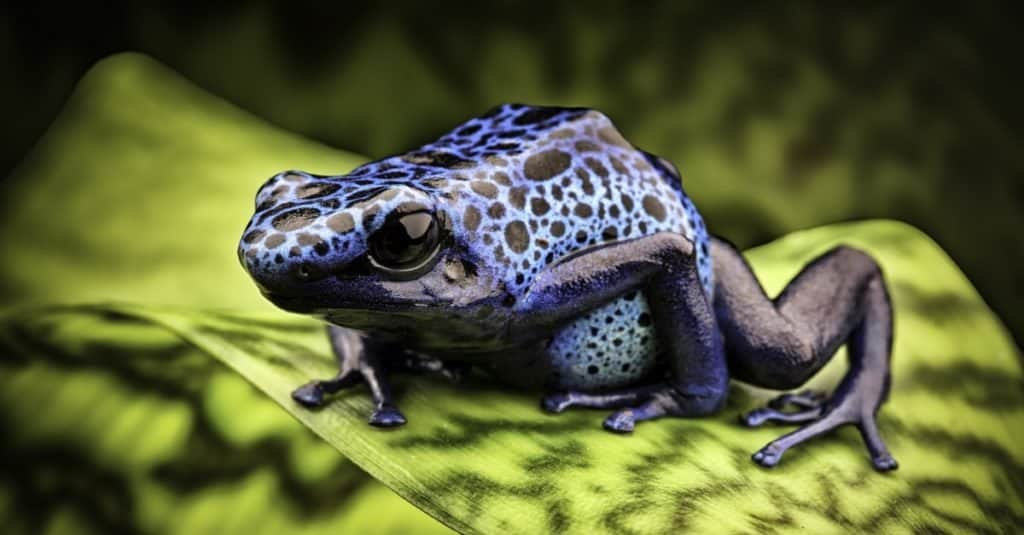
It is believed that Poison dart frogs first began to express their trademark mutations and evolve from their non-poisonous relatives sometime 20-40 Million years ago. In addition to developing a powerful toxicity and their striking warning colors, these amphibians also had to acquire a resistance to their own poison in order to survive, an evolutionary hurdle that all poisonous creatures must overcome. Poison dart frogs achieved this through the genetic manipulation of a single amino acid in their DNA.
The vast array of species and genera, all displaying their own unique color variants indicate a high level of genetic diversity in these amphibians, with scientist believing some new species first emerged as recently as 6,000 years ago.
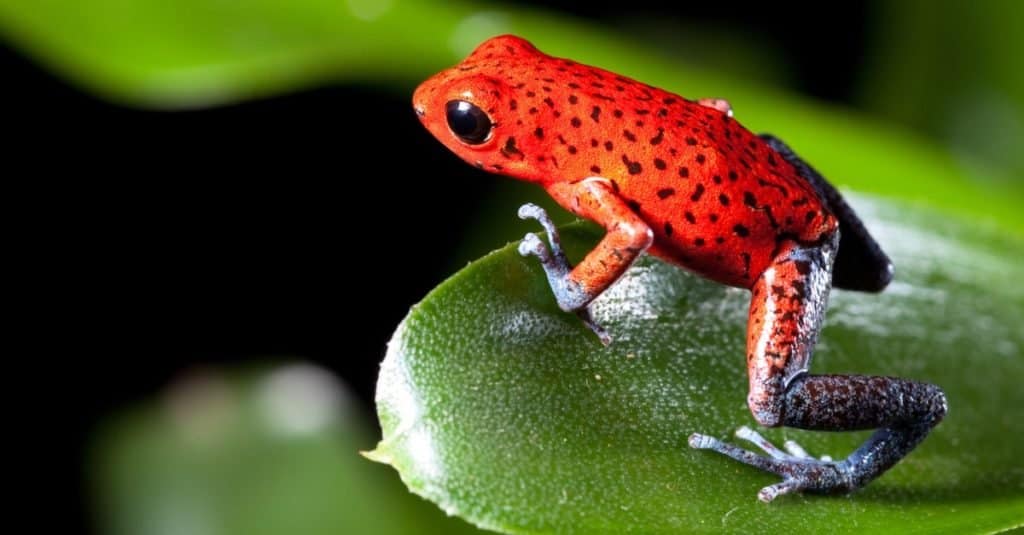
Some facts about these frogs’ behavior include that they like to live in the trees closest to the ground, or the leaf litter of the jungle floor. They prefer resting on leaves and tree branches.
These frogs croak and squeak like other frog species, using these calls to establish their habitats and attract mates. They are mostly diurnal creatures, which means they are active during the day.
These frogs make little attempt to hide from predators, as their skin is warning enough. If their toxins don’t kill a predator, they will at least make them very unappetizing. Predators will remember the unpleasant taste of this frog, and will likely not attempt to eat another one again.
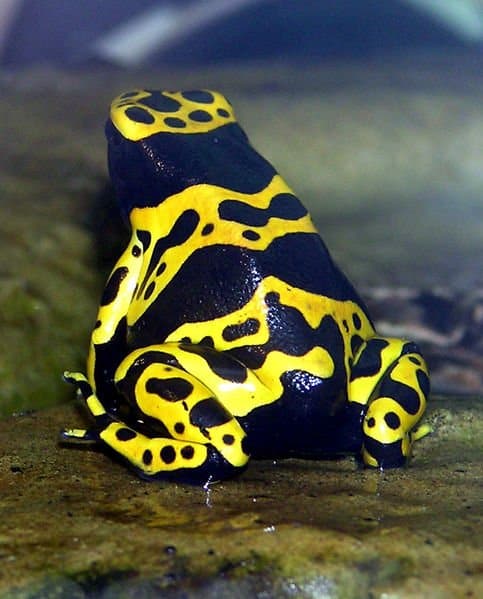
These frogs are native to the damp rainforests of Central and South America. They can sometimes be confused with another small, brightly colored frog species called the Mantella, but Mantellas are only native to Madagascar.
These frogs have also been introduced to Hawaii. They used to be imported to the US in great numbers for the pet trade, but this has since slowed down. In Europe, some species of frogs are smuggled into the country.
Because of their sensitivity to the environment, these frogs do not do well in heavily polluted areas.
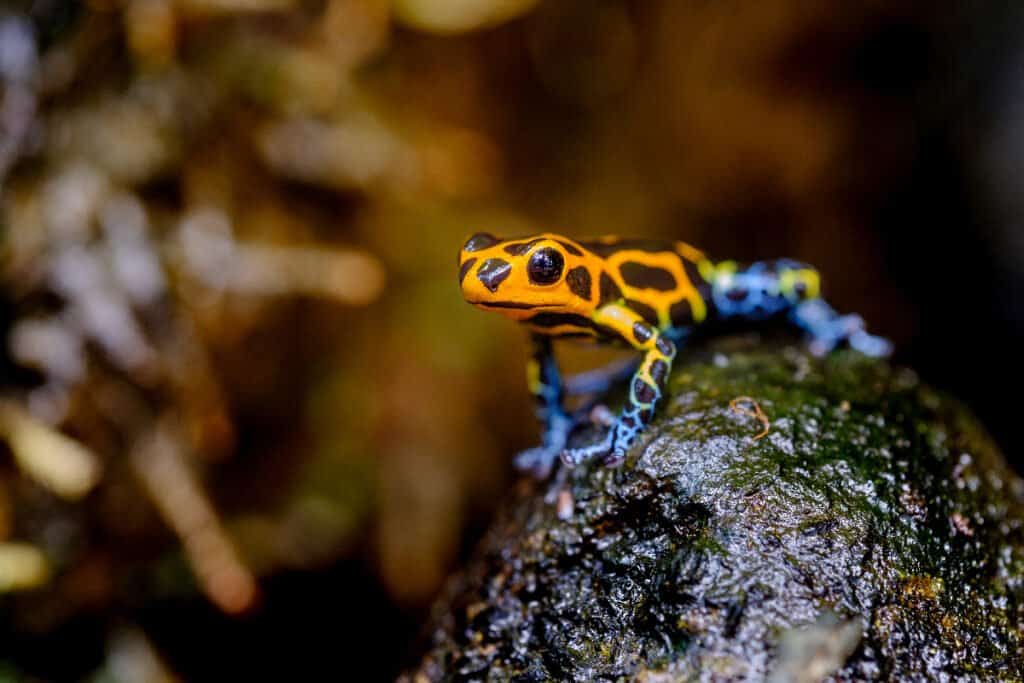
Because the toxins in their skin make them unpleasant or even toxic for most animals to eat, poison dart frogs do not have a wide array of natural predators. There is a species of snake, Leimadophis epinephelus that is immune to the venom of the poison dart frog.

Poison dart frogs breed multiple times throughout the year, often in conjunction with periods of rainfall. Both males and females are combative during this time – males compete for ideal perches from which to call for mates, and females compete for nesting areas. Females are sometimes known to devour the eggs of other frogs
